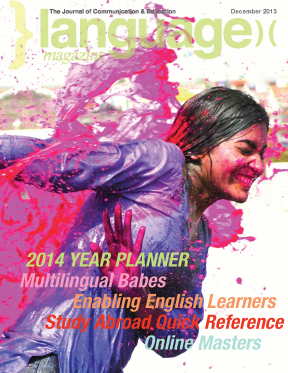Where the World Comes to School
After the results of the latest international comparisons of educational achievement (PISA) are released early this month, recriminations will no doubt be ringing throughout schools until they close for the holidays. Different factions will skew the results to prove, whatever their point may be, and teachers will bear the brunt of any criticism. However, these tests are a snapshot measure of educational achievement in a limited area at the age of 15 and take little account of the overall socio-economic situation in which the students live.
Whatever the results of these tests, American education is more in demand than ever, believe it or not. More and more international students are prepared to pay exorbitant fees to attend our universities and colleges (see p.55) with little hope of being able to work in their new-found home. Universities don’t excel without excellent students. Although there is massive international demand for places at U.S. schools, overseas students still only account for 6% of the student body, and the proportion of children at private high schools has fallen below 10%. This means that the resounding majority of college students are educated in U.S. public high schools. Somehow or another, our “underperforming” public schools fill the pipeline for our exceptional colleges.
What’s more, parents from abroad are prepared to pay good money for the privilege of sending their children to our much-maligned public high schools — the number of tuition-paying foreign students in American public high schools has jumped, from a few hundred nationwide in 2007, to nearly 3,000 last year. Despite annual fees of $10,000-15,000, plus living and travel expenses, many of our public high schools are still seen as good value by parents overseas who want to give their children every opportunity.
We must also take into account the social conditions in which our schools operate. In the last 30 years, the U.S. has seen the biggest wave of immigration the world has ever known. This is a challenge for our educational system but it is also the fundamental bedrock on which our society has flourished. Before the rest of the world got global, we were global in our heritage. Diversity in the classroom fuels ingenuity in the workplace. The integration of new Americans is the very reason for our innovative success.
To succeed in the 21st century, everyone will need look at challenges from an international perspective — be it selling t-shirts or making water safe to drink — and the cultural understanding acquired through growing up in diverse neighborhoods will be invaluable.
But we must do more to address the funding and quality differentials between high schools in rich suburbs and those in poorer areas so that our college population more closely resembles our overall demographics in terms of race, heritage, and income.
And, we need to give our own children the same advantage that overseas students have — an international outlook. Luckily, our diverse society offers many opportunities for internationalizing the classroom but we also need to encourage more American students to study abroad, employ the technological advances to enable them to communicate with their peers all over the world, and instill in our youth enough knowledge of other cultures to pique their curiosity.
IN THIS ISSUE:
Making Education More Than a Grade
Anne Paonessa assesses the impact of service learning on English language learners
Doing Our Best
Considerations on ways to share learning
From the Mouths of Babes
Angelika Putintseva wants to know how many languages a child can learn simultaneously
From OnCampus to Online
Mahmoud Arani, Christine Bauer-Ramazani, and Elizabeth O’Dowd highlight the challenges and rewards associated with taking a teacher education program online
2014 Year Planner
Language-related conferences, workshops and events around the globe
Study Abroad Advisor’s Guide
Trends, 2014 events and contacts at your fingertips
Last Writes
Richard Lederer celebrates 100 years of crosswords



